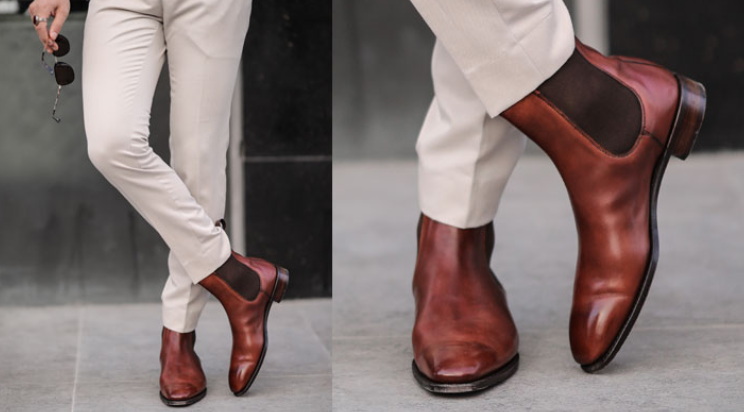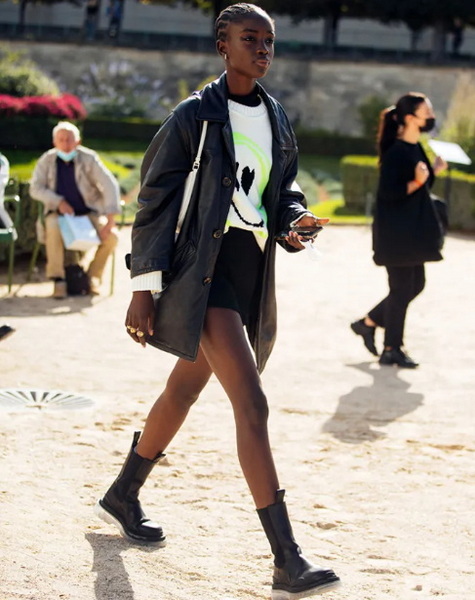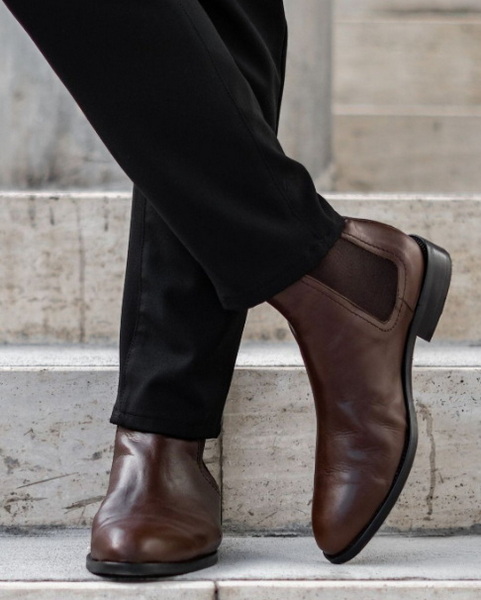Content Menu
● Understanding the Luxury Footwear Market by Gender
>> Women Lead in Luxury Footwear Market Share
>> Men's Luxury Footwear Preferences
● Types of Luxury Shoes Preferred by Men and Women
● Price Differences Between Men's and Women's Luxury Shoes
>> Women's Shoes Often Cost More in Luxury Brands
>> Men's Shoes Can Be More Expensive in Popular Brands
● Factors Influencing Shoe Purchasing Preferences
>> Comfort, Fit, and Style
>> Shopping Channels
>> Spending Habits and Economic Factors
● The Role of Gendered Shoe Design and Pricing
● Conclusion
● FAQ
>> 1. Do women buy more luxury shoes than men?
>> 2. Are women's luxury shoes more expensive than men's?
>> 3. What types of luxury shoes do men prefer?
>> 4. Why do women's shoes often cost more than men's?
>> 5. Do men and women shop differently for shoes?
● Citations:
When it comes to purchasing high-end, luxury, or "top dollar" shoes, consumer preferences reveal interesting patterns influenced by gender, lifestyle, fashion trends, and economic factors. This article explores whether men or women are more inclined to invest in expensive footwear, the types of luxury shoes favored by each gender, pricing disparities, and the driving forces behind these purchasing decisions.

Understanding the Luxury Footwear Market by Gender
Women Lead in Luxury Footwear Market Share
Women have historically dominated the luxury footwear market. In 2020, women accounted for approximately 48.47% of the luxury footwear market share, a figure expected to increase steadily in the coming years[2]. This dominance is largely due to women's strong preference for designer brands and a wider variety of luxury shoe types, including heels, sandals, boots, and sneakers[3].
Women's purchases are often motivated by a combination of fashion, comfort, and brand prestige. High-end brands such as Gucci, Balenciaga, Jimmy Choo, and Louboutin are especially popular among affluent female consumers who seek to make a style statement[3]. The increasing participation of women in corporate roles globally has also contributed to more first-time buyers of luxury footwear, further boosting the women's segment, which accounted for 47.1% of global revenue in 2021[5].
Men's Luxury Footwear Preferences
Men, while purchasing fewer types of luxury footwear, tend to spend more per pair on certain categories. In 2022, 48% of men preferred luxury sneakers, making sneakers the most common luxury footwear type among men[2]. Luxury loafers are the second most popular choice for men, accounting for 29% of luxury footwear purchases[2].
Interestingly, men spend more on luxury footwear overall compared to women. One report found that men spent an average of $295 on footwear (15% above average), while women spent $217 (15% below average)[7]. Despite this, men and women buy roughly the same number of luxury items, with men's higher spending attributed to the price per item rather than quantity[8].
Types of Luxury Shoes Preferred by Men and Women
| Gender | Popular Luxury Footwear Types | Notable Preferences |
| Women | High-heel sandals, flats, boots, sneakers | Fashion-forward, brand-conscious, comfort-oriented |
| Men | Sneakers, loafers, formal shoes | Functional, sporty, status-symbol sneakers |
Women tend to favor high-heel sandals (20% of women buyers in 2022), while luxury flats were more popular in 2021 (21%)[2]. Men's luxury footwear purchases skew heavily towards sneakers, which are both fashionable and functional, with loafers also holding significant market share[2].
Price Differences Between Men's and Women's Luxury Shoes
Women's Shoes Often Cost More in Luxury Brands
Data shows that in many high-end brands, women's shoes are priced higher than men's. For example, the median price of a Gianvito Rossi women's shoe was $750 compared to $469 for men's shoes from the same brand[4][6]. Similar trends are observed with Valentino, Jimmy Choo, Saint Laurent, and Maison Margiela, where women's shoes are consistently more expensive by hundreds of dollars[6].
This price difference is influenced by several factors:
- Design Complexity: Women's shoes often have more intricate designs, colors, and materials, which increase production costs[4].
- Market Demand and Elasticity: Women may have a stronger brand attachment and willingness to pay premium prices for fashion and style, leading brands to price women's shoes higher[4].
- Variety and Customization: Women's shoes come in a wider variety of styles and sizes, requiring more diverse production runs[4].
Men's Shoes Can Be More Expensive in Popular Brands
Conversely, for popular, moderately priced brands such as Nike, Adidas, and Vans, men's shoes often cost slightly more than women's. For instance, Vans sneakers for men are $10 more costly on average than women's, and similar small price differences exist for Converse, Nike, and Adidas[6][9]. This is partly because men's lines may include more expensive models or materials, such as boots or specialty sneakers[9].

Factors Influencing Shoe Purchasing Preferences
Comfort, Fit, and Style
Both men and women prioritize comfort, fit, and brand when purchasing shoes, but their preferences differ slightly. Women tend to care more about available colors, promotions, and silhouette styles, while men emphasize product availability, sustainability, and online shopping experience[7].
Shopping Channels
Men are more likely to buy shoes directly from brand stores or official websites, valuing authenticity and product availability. Women, on the other hand, prefer off-price retailers, value fashion stores, and superstores, often seeking deals and variety[7].
Spending Habits and Economic Factors
Men generally spend more on footwear than women, but women buy a wider variety of shoes and more brands overall. Women have access to more than 87% more brands than men and tend to spend double the amount on shoes compared to men in some cases[6].
The wage gap and income disparities also play a role in spending habits on luxury footwear. Men's higher average income allows for higher spending per item, whereas women may prioritize purchasing a broader range of styles and brands[8].
The Role of Gendered Shoe Design and Pricing
Women's shoes are often narrower and designed differently compared to men's shoes, which can affect comfort and fit. Some men have found women's shoes too narrow, while others have successfully worn women's shoes for cost savings or style preferences, provided the fit is right[1].
Pricing differences between men's and women's shoes are sometimes attributed to production costs, design complexity, and market demand rather than outright gender discrimination[4]. The existence of gendered products reflects consumer demand and preferences, with some women opting to buy men's or unisex shoes for comfort or price reasons[1][4].
Conclusion
In summary, women currently dominate the luxury footwear market in terms of variety, market share, and brand engagement, often preferring high-heel sandals and fashion-forward designs. Men tend to spend more per pair on luxury sneakers and loafers and are more likely to shop directly from brand stores. Women's luxury shoes often carry higher price tags in designer brands due to design, production, and market factors, while men's shoes can be slightly more expensive in popular mid-range brands.
Ultimately, preferences for top dollar shoes are shaped by a complex interplay of fashion trends, comfort needs, economic factors, and shopping habits. Both men and women value luxury footwear as a status symbol and a form of self-expression, but their purchasing behaviors reflect distinct priorities and market dynamics.

FAQ
1. Do women buy more luxury shoes than men?
Yes, women buy a wider variety of luxury shoes and dominate the market share, accounting for nearly half of the luxury footwear market. However, men tend to spend more per pair on certain types like sneakers and loafers[2][5].
2. Are women's luxury shoes more expensive than men's?
In many high-end brands, women's shoes are priced higher than men's due to design complexity, production costs, and market demand. However, in popular mid-range brands, men's shoes can be slightly more expensive[4][6][9].
3. What types of luxury shoes do men prefer?
Men predominantly prefer luxury sneakers and loafers. Sneakers make up the largest share of men's luxury footwear purchases, followed by loafers[2].
4. Why do women's shoes often cost more than men's?
Women's shoes often have more intricate designs, a wider variety of styles, and are produced in more sizes, which increases production costs. Additionally, women may have a stronger brand attachment and are willing to pay premium prices[4].
5. Do men and women shop differently for shoes?
Yes, men tend to shop more directly from brand stores and websites, focusing on availability and sustainability. Women prefer off-price retailers and value fashion stores, often seeking deals and a wider selection[7].
Citations:
[1] https://www.reddit.com/r/10s/comments/1gt85wb/is_it_a_bad_idea_to_get_womens_shoes_as_a_man_to/
[2] https://runrepeat.com/luxury-footwear-statistics
[3] https://www.linkedin.com/pulse/luxury-footwear-market-trends-rising-hwtoc
[4] http://yingyushijie.com/business/detail/id/314/category/46.html
[5] https://www.globenewswire.com/news-release/2023/08/21/2728681/28124/en/Global-Luxury-Footwear-Market-Size-Share-Trends-Analysis-Report-2023-2030-Brands-Such-as-Kering-Prada-and-Balenciaga-are-Engaging-in-Direct-Competition-with-Sportswear-Giants.html
[6] https://runrepeat.com/womens-shoe-statistics
[7] https://www.simon-kucher.com/en/insights/consumer-demographic-data-footwear
[8] https://www.luxurydaily.com/men-spend-more-on-luxury-but-shop-the-same-amount-as-women-report/
[9] https://priceonomics.com/how-much-do-shoes-cost-for-men-vs-women/
[10] https://www.forbes.com/sites/priceonomics/2017/07/27/how-much-do-womens-shoes-cost-vs-mens/
[11] https://www.asics.com
[12] https://play.google.com/store/apps/details?id=com.nike.omega
[13] https://www.nike.com/in/w/shoes-y7ok
[14] https://www.converse.com
[15] https://hypebeast.com/2021/10/footwear-prices-inflation-us-bureau-of-labor-statistics-report
[16] https://www.consumeredge.com/resources/insights/fashion-footprints-analyzing-gender-based-preferences-at-major-uk-apparel-footwear-and-luxury-brands/
[17] https://www.newsweek.com/five-good-reasons-womens-shoes-cost-more-mens-641222
[18] https://www.custommarketinsights.com/report/luxury-footwear-market/
[19] https://www.reddit.com/r/pointlesslygendered/comments/nkma2c/womens_shoes_are_30_more_expensive_than_mens/
[20] https://www.simon-kucher.com/en/insights/footwear-purchasing-criteria
[21] https://financebuzz.com/male-vs-female-spending-statistics
[22] https://www.statista.com/statistics/1393444/china-share-of-online-luxury-consumers-by-gender/
[23] https://core.ac.uk/download/pdf/234694135.pdf

















